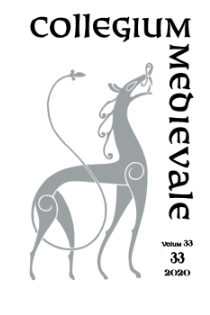Sammendrag
This article presents a new interpretation and identification of a particular type of church in inland East-Norway (Eidsivatingslagen), known in Old Norse as the þriðjungkirkja. These churches were the counterparts to the fylkiskirkja ('county church') in other parts of the Norwegian kingdom, and crucial in the formation of the inland church organisation from the early eleventh century.
Previous interpretations of the þriðjungkirkja have seen its origins from a special type of administrative unit, found only in the district Romerike - the þriðjung. A closer analysis shows, however, that the þriðjung was a younger civil, not an ecclesiastical, division and therefore a misleading starting point. The rural deanery (Norw. prosti), on the other hand, was an ecclesiastical rather than a civil division. In written sources, dating from 1223 to c. 1600, we identify 12 rural deaneries/deans and the churches attached to them. The deaneries probably correspond to the 12 units mentioned in early 11th-century skaldic poetry. From this, we find that the þriðjung originates from a subdivision of former legal units (thing-districts). According to the chronicle Historia Norwegie there were four legal units in the Eidsviating-region in the mid-12th century.
Further, we identify the churches at Vågå, Fron and Ringsaker/Hoff, Fluberg and Gran/Nes, Norderhov and Heggen/Tinn, Hjartdal and Seljord, as þriðjungkirkjur and discuss if these in fact originates from the church organisation as agreed upon by the thing assemblies and the king, with his bishops, around AD 1020.

Dette verket er lisensiert under Creative Commons Attribution-ShareAlike 4.0 International License.
Opphavsrett 2020 Frode Iversen og Jan Brendalsmo

